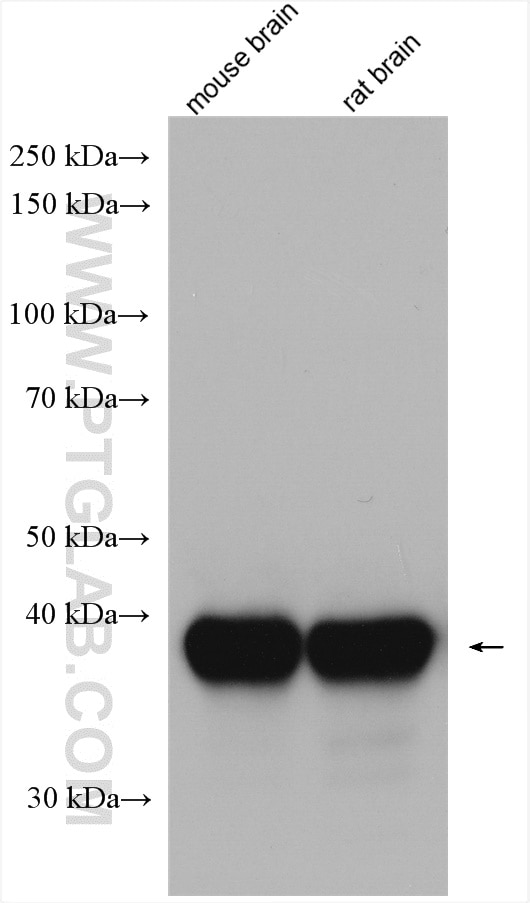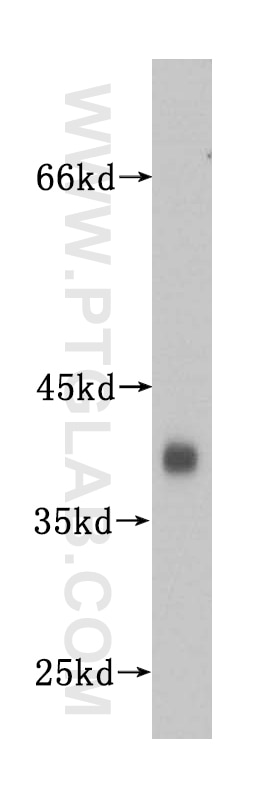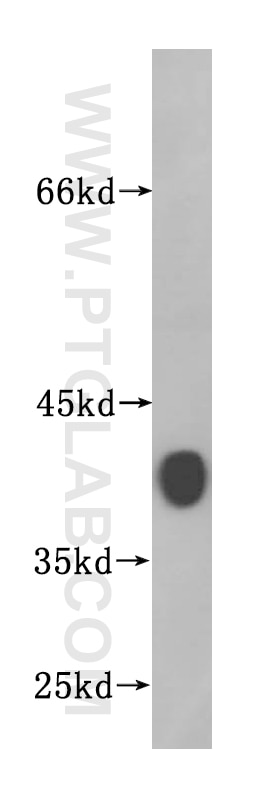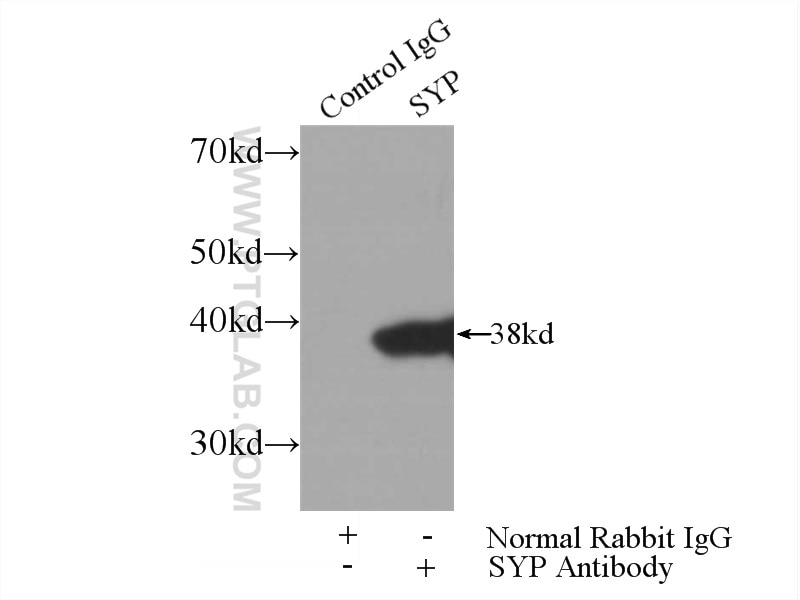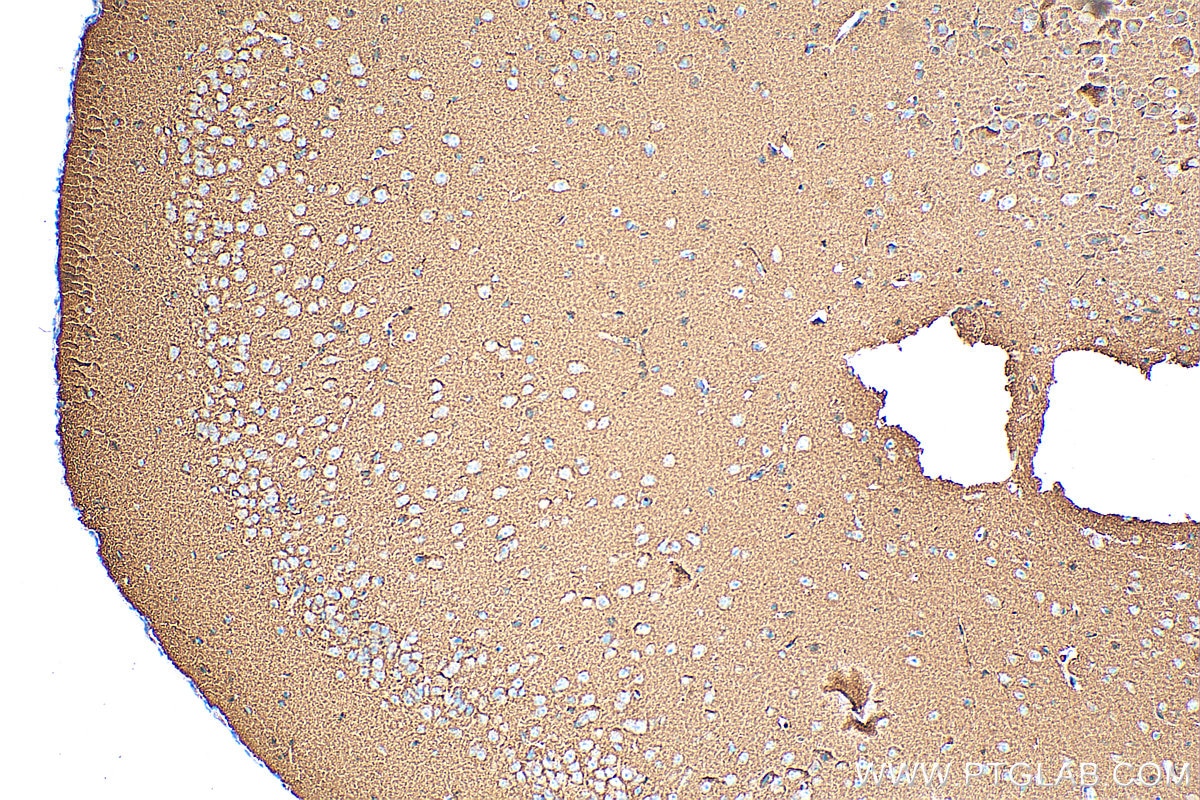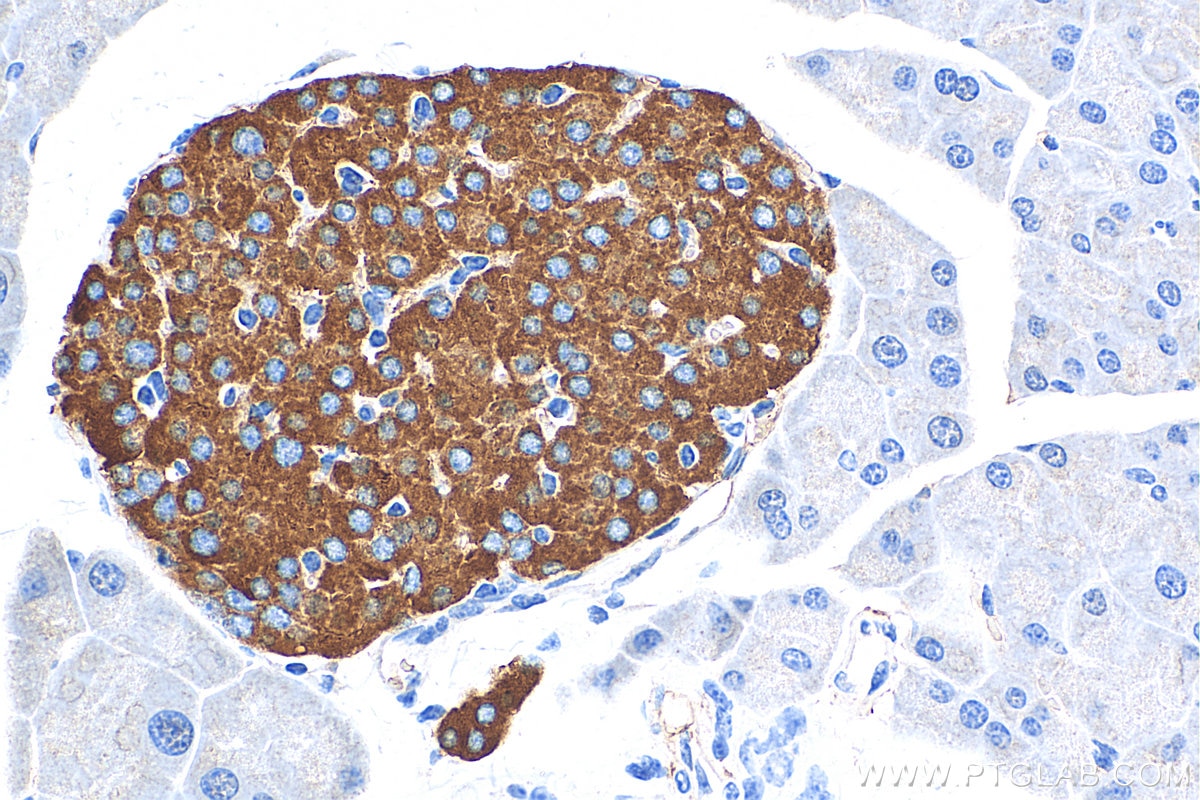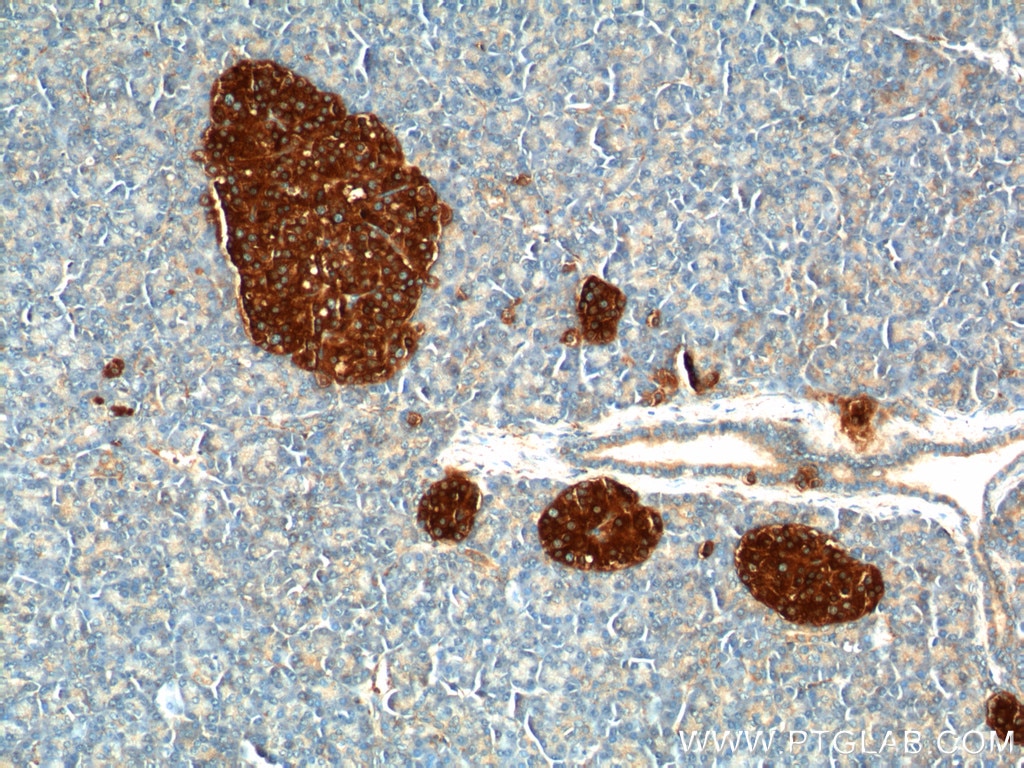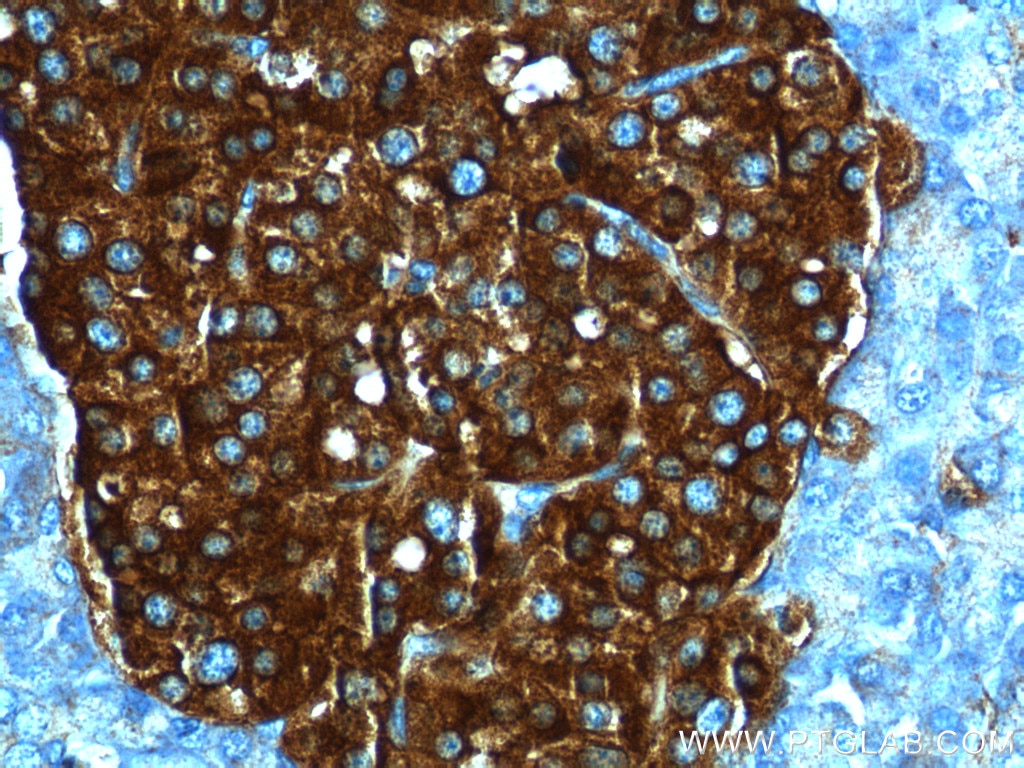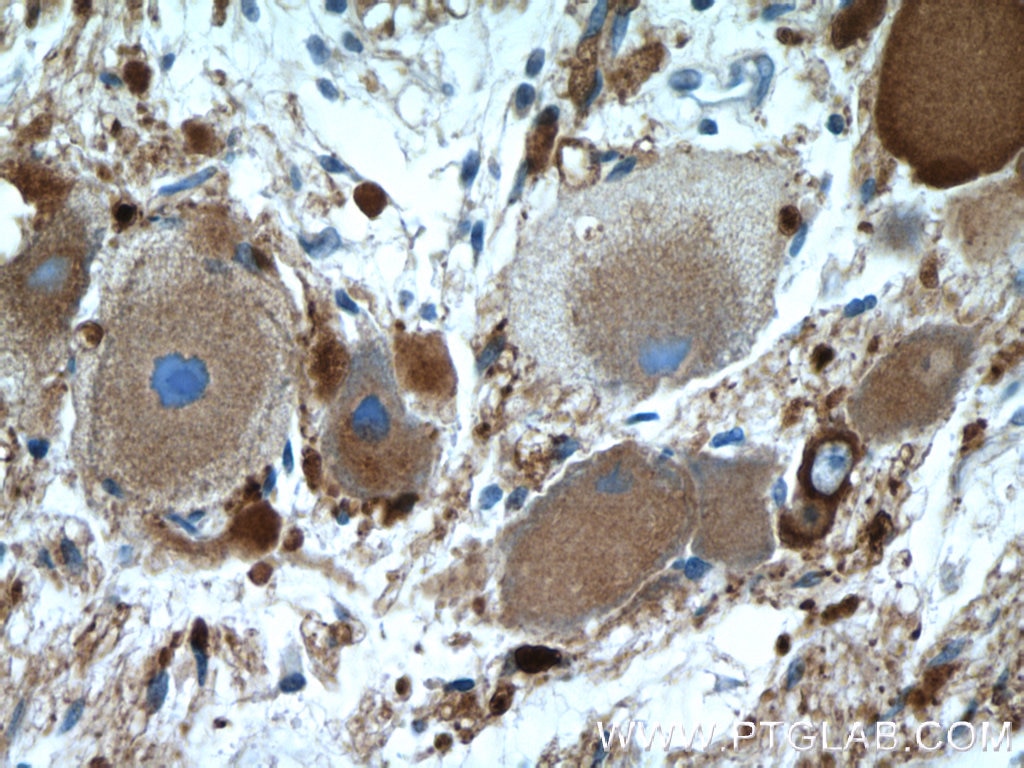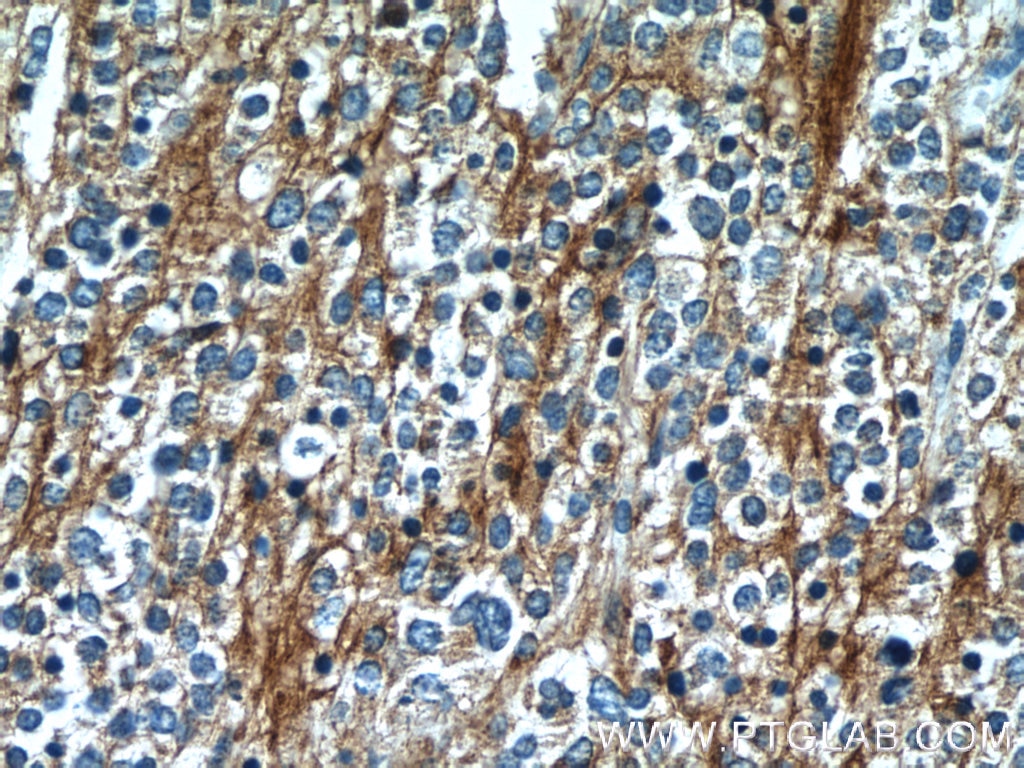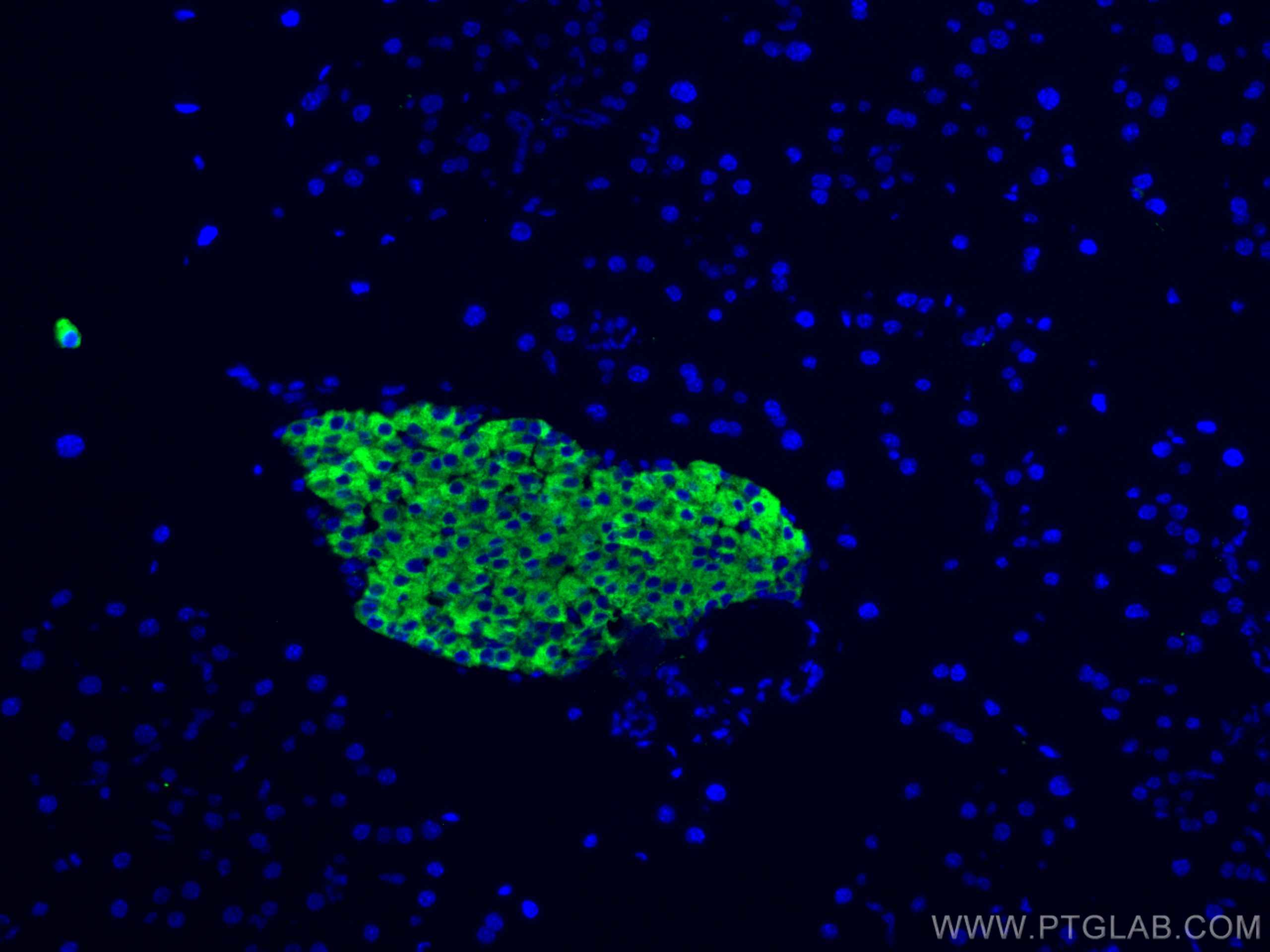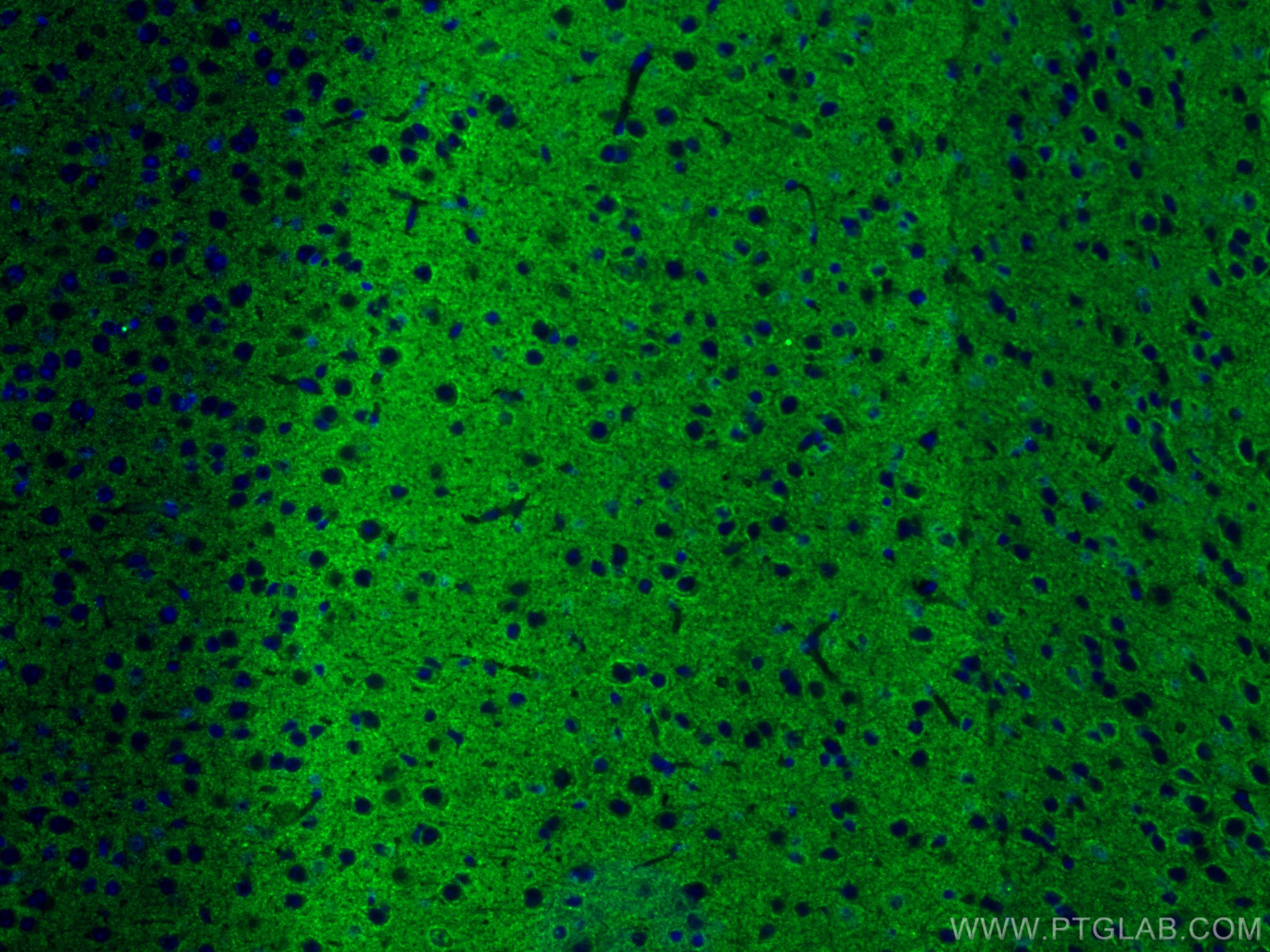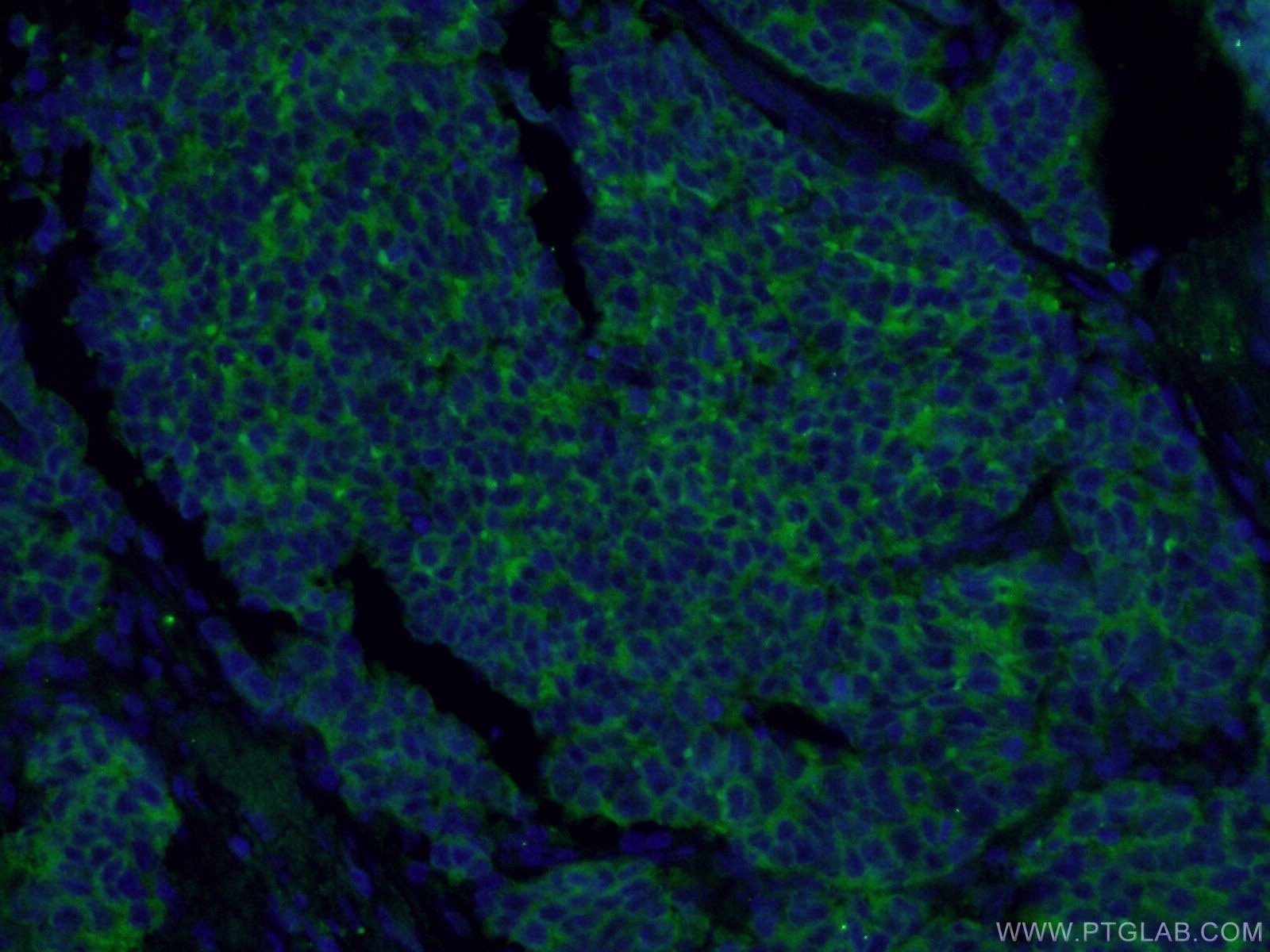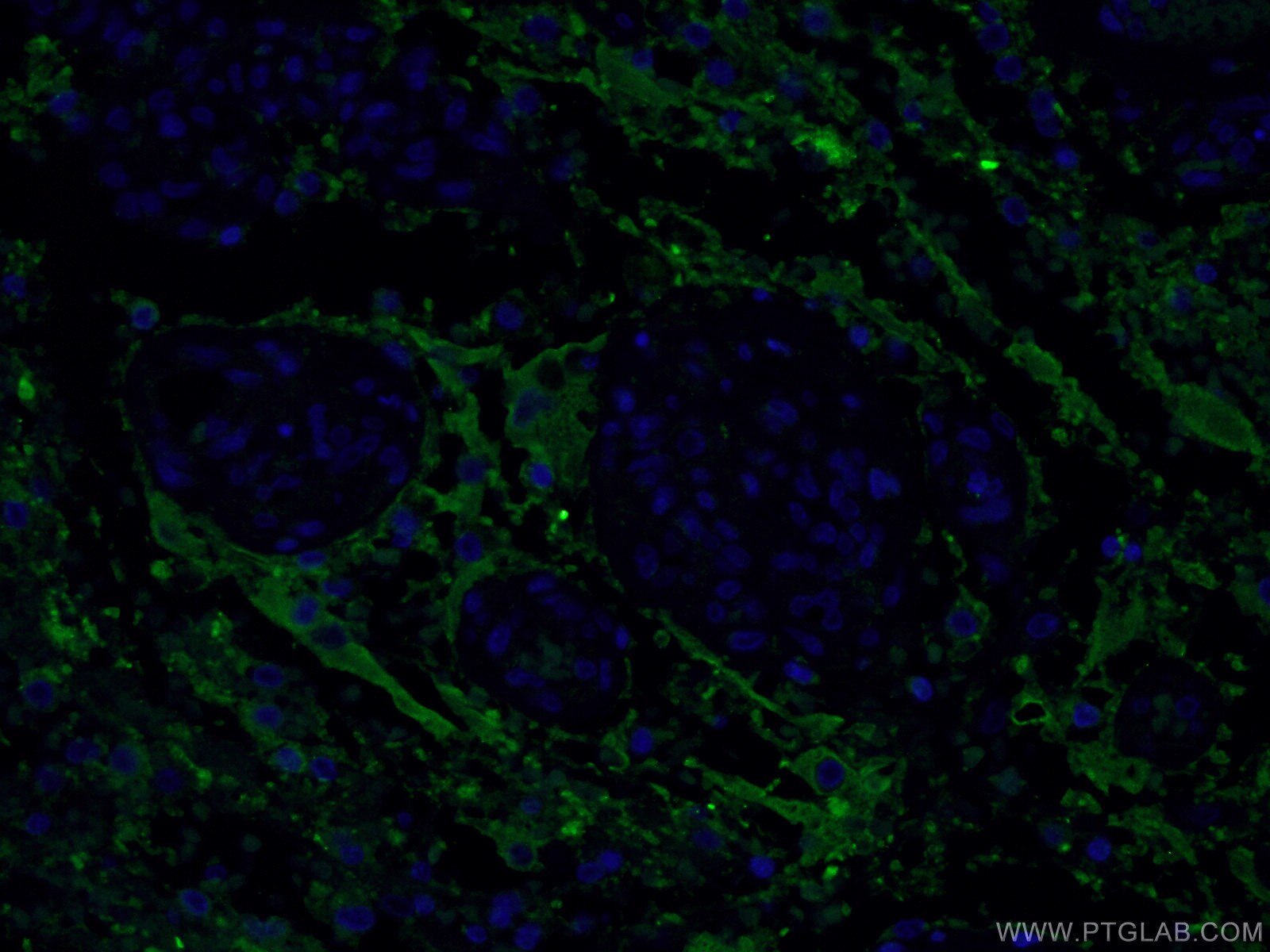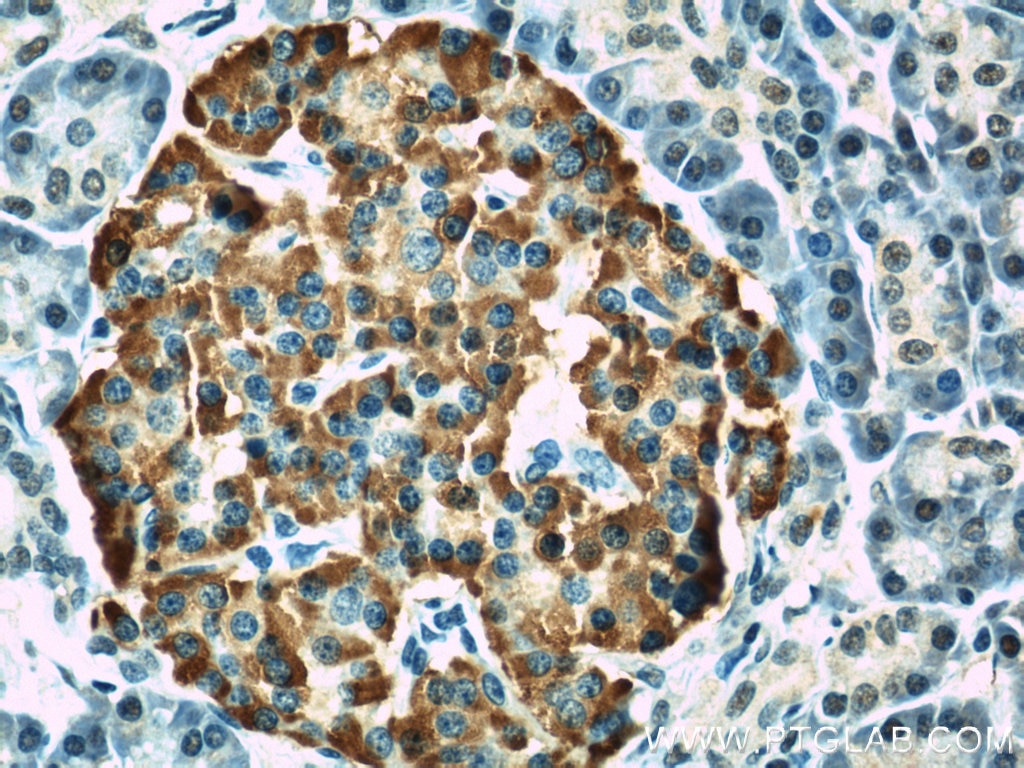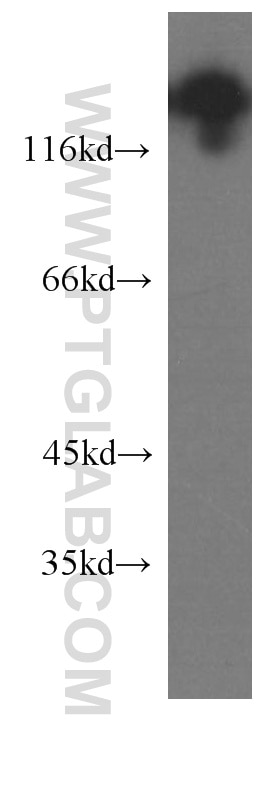Synaptophysin Polyklonaler Antikörper
Synaptophysin Polyklonal Antikörper für IF, IHC, IP, WB, ELISA
Wirt / Isotyp
Kaninchen / IgG
Getestete Reaktivität
human, Maus, Ratte und mehr (2)
Anwendung
WB, IP, IHC, IF, ELISA
Konjugation
Unkonjugiert
Kat-Nr. : 17785-1-AP
Synonyme
Galerie der Validierungsdaten
Geprüfte Anwendungen
| Erfolgreiche Detektion in WB | Maushirngewebe, humanes Hirngewebe, Maus-Cerebellum-Gewebe, Rattenhirngewebe |
| Erfolgreiche IP | Maushirngewebe |
| Erfolgreiche Detektion in IHC | Maus-Pankreasgewebe, Gangliomgewebe, humanes Hirngewebe, humanes Hypophysenadenom-Gewebe, humanes Pankreasgewebe, Maushirngewebe, Neuroblastomgewebe Hinweis: Antigendemaskierung mit TE-Puffer pH 9,0 empfohlen. (*) Wahlweise kann die Antigendemaskierung auch mit Citratpuffer pH 6,0 erfolgen. |
| Erfolgreiche Detektion in IF | Maus-Pankreasgewebe, humanes Gliomgewebe, humanes Lungenkarzinomgewebe, Maushirngewebe, PC-12-Zellen |
Empfohlene Verdünnung
| Anwendung | Verdünnung |
|---|---|
| Western Blot (WB) | WB : 1:5000-1:50000 |
| Immunpräzipitation (IP) | IP : 0.5-4.0 ug for 1.0-3.0 mg of total protein lysate |
| Immunhistochemie (IHC) | IHC : 1:1000-1:4000 |
| Immunfluoreszenz (IF) | IF : 1:200-1:800 |
| It is recommended that this reagent should be titrated in each testing system to obtain optimal results. | |
| Sample-dependent, check data in validation data gallery | |
Veröffentlichte Anwendungen
| WB | See 114 publications below |
| IHC | See 13 publications below |
| IF | See 37 publications below |
Produktinformation
17785-1-AP bindet in WB, IP, IHC, IF, ELISA Synaptophysin und zeigt Reaktivität mit human, Maus, Ratten
| Getestete Reaktivität | human, Maus, Ratte |
| In Publikationen genannte Reaktivität | human, hamster, Hund, Maus, Ratte |
| Wirt / Isotyp | Kaninchen / IgG |
| Klonalität | Polyklonal |
| Typ | Antikörper |
| Immunogen | Synaptophysin fusion protein Ag11781 |
| Vollständiger Name | synaptophysin |
| Berechnetes Molekulargewicht | 313 aa, 34 kDa |
| Beobachtetes Molekulargewicht | 38-40 kDa |
| GenBank-Zugangsnummer | BC064550 |
| Gene symbol | SYP |
| Gene ID (NCBI) | 6855 |
| Konjugation | Unkonjugiert |
| Form | Liquid |
| Reinigungsmethode | Antigen-Affinitätsreinigung |
| Lagerungspuffer | PBS mit 0.02% Natriumazid und 50% Glycerin pH 7.3. |
| Lagerungsbedingungen | Bei -20°C lagern. Nach dem Versand ein Jahr lang stabil Aliquotieren ist bei -20oC Lagerung nicht notwendig. 20ul Größen enthalten 0,1% BSA. |
Hintergrundinformationen
Synaptophysin (SYP, also known as major synaptic vesicle protein p38) is a 38-kDa integral membrane glycoprotein that regulates synaptic vesicle endocytosis. It is the most abundant synaptic vesicle protein by mass. Synaptophysin is present in neuroendocrine cells and neurons that participate in synaptic transmission. Synaptophysin is a useful marker for identification of neuroendocrine cells and neoplasms. (PMID: 3010302; 21658579)
Protokolle
| Produktspezifische Protokolle | |
|---|---|
| WB protocol for Synaptophysin antibody 17785-1-AP | Protokoll herunterladen |
| IHC protocol for Synaptophysin antibody 17785-1-AP | Protokoll herunterladen |
| IF protocol for Synaptophysin antibody 17785-1-AP | Protokoll herunterladen |
| IP protocol for Synaptophysin antibody 17785-1-AP | Protokoll herunterladen |
| Standard-Protokolle | |
|---|---|
| Klicken Sie hier, um unsere Standardprotokolle anzuzeigen |
Publikationen
| Species | Application | Title |
|---|---|---|
Nat Biotechnol Magnify is a universal molecular anchoring strategy for expansion microscopy | ||
Nat Neurosci Aerobic glycolysis is the predominant means of glucose metabolism in neuronal somata, which protects against oxidative damage | ||
Mol Cell Mixed Lineage Kinase Domain-like Protein MLKL Breaks Down Myelin following Nerve Injury. | ||
Neuron Astrocytic ApoE reprograms neuronal cholesterol metabolism and histone-acetylation-mediated memory. | ||
Neuron Loss of PYCR2 Causes Neurodegeneration by Increasing Cerebral Glycine Levels via SHMT2. |
Rezensionen
The reviews below have been submitted by verified Proteintech customers who received an incentive forproviding their feedback.
FH Alexandra (Verified Customer) (06-11-2023) | Hoechst-blue Green-Tubulin III (neuronal marker) Orange (Synaptophysin)
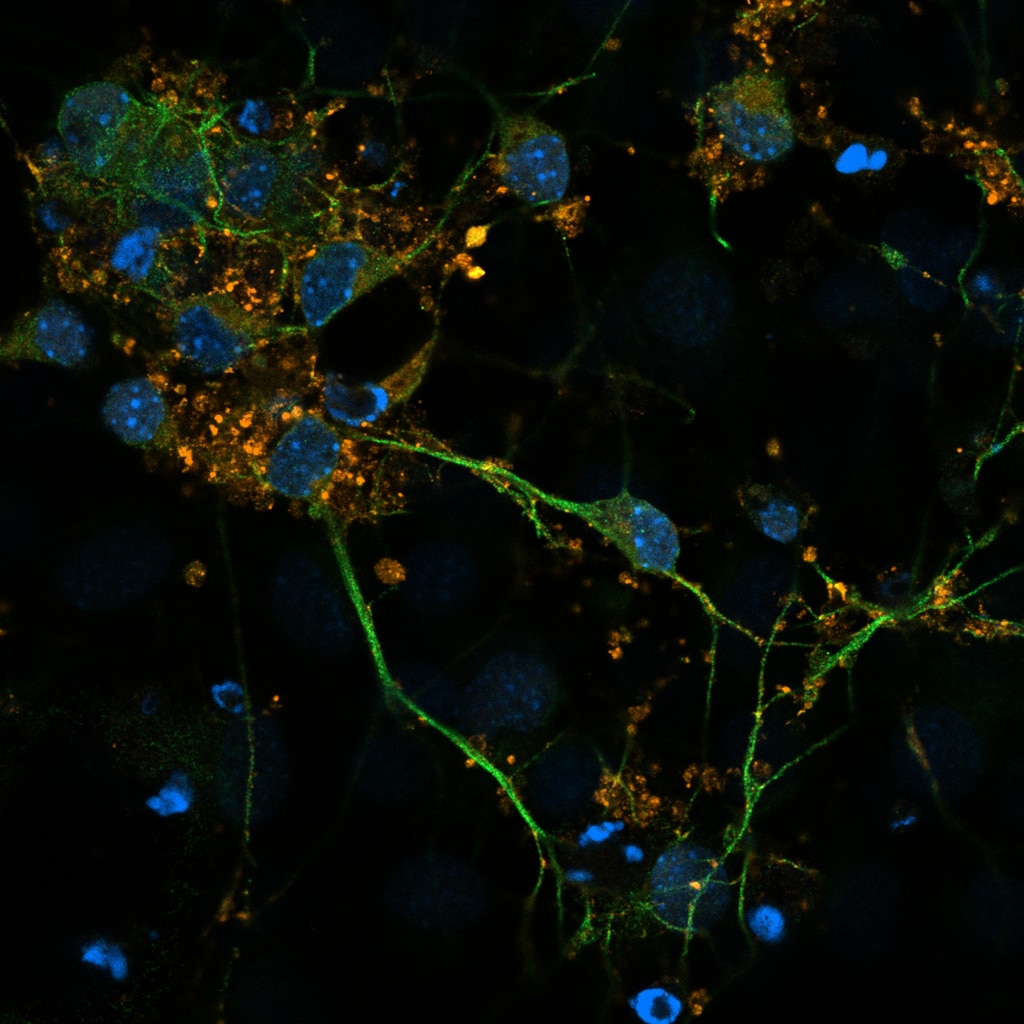 |
FH Azita (Verified Customer) (05-31-2021) | Human primary cortical neurons was labelled with 1/1000 of the Synaptophysin Polyclonal antibody. The labelling was strong and very good. Blue (Bisbenzimide) Green (Synaptophysin)
 |

